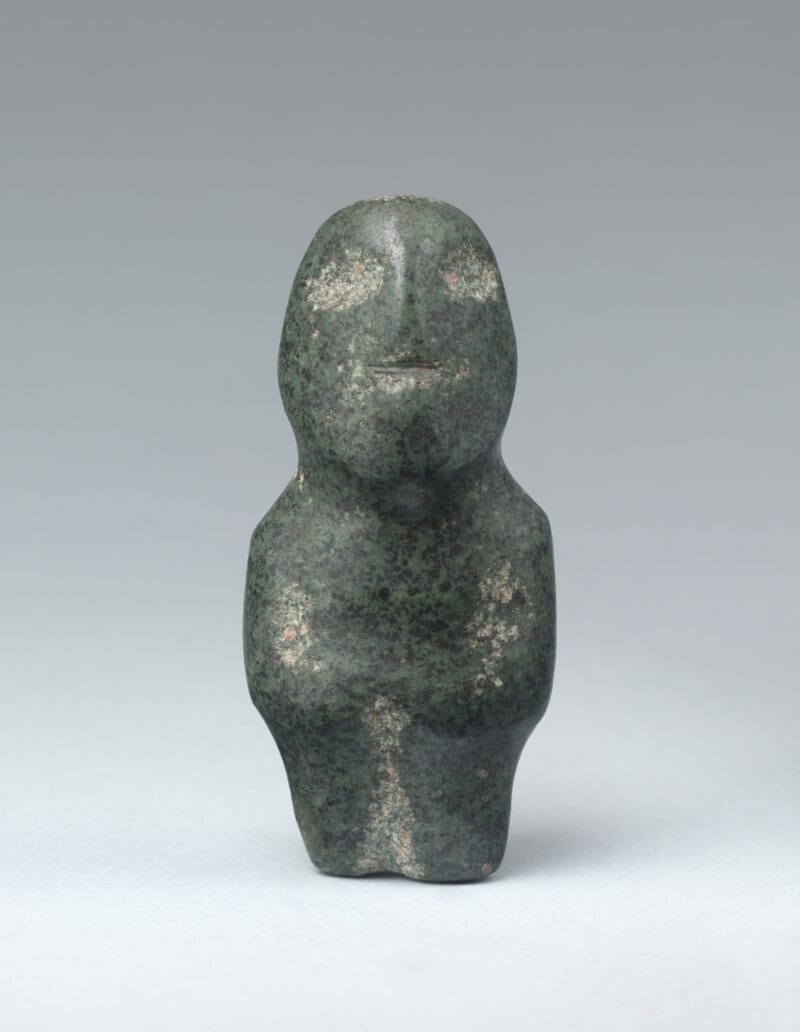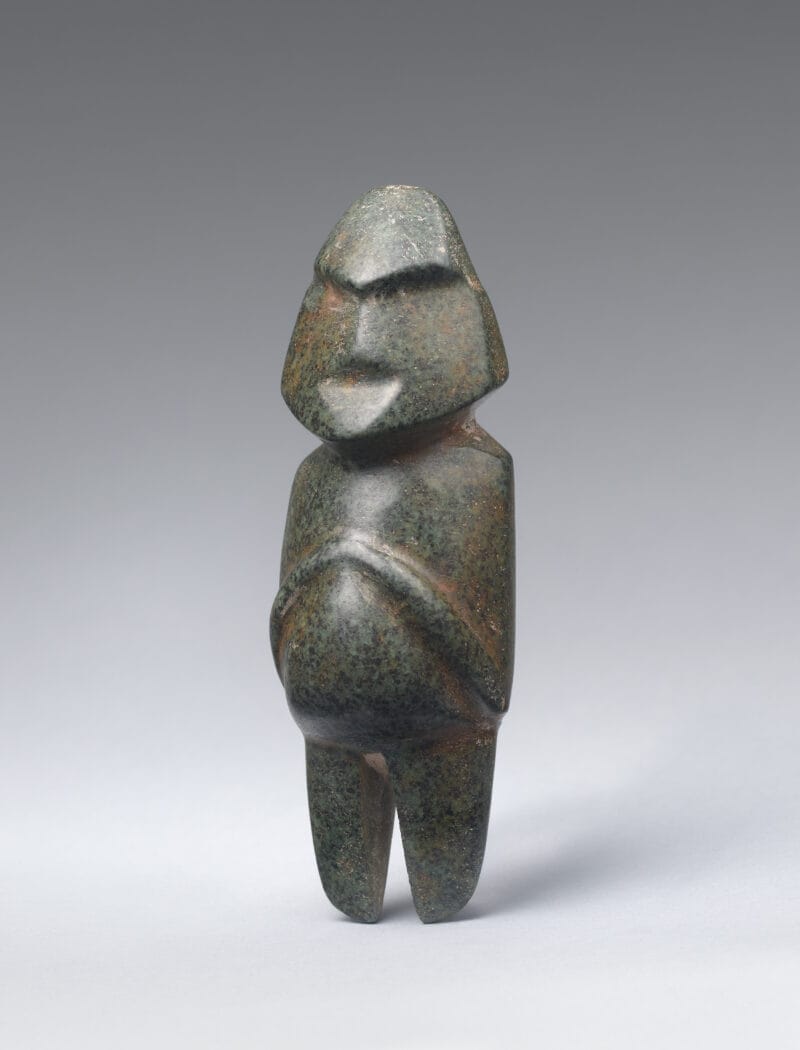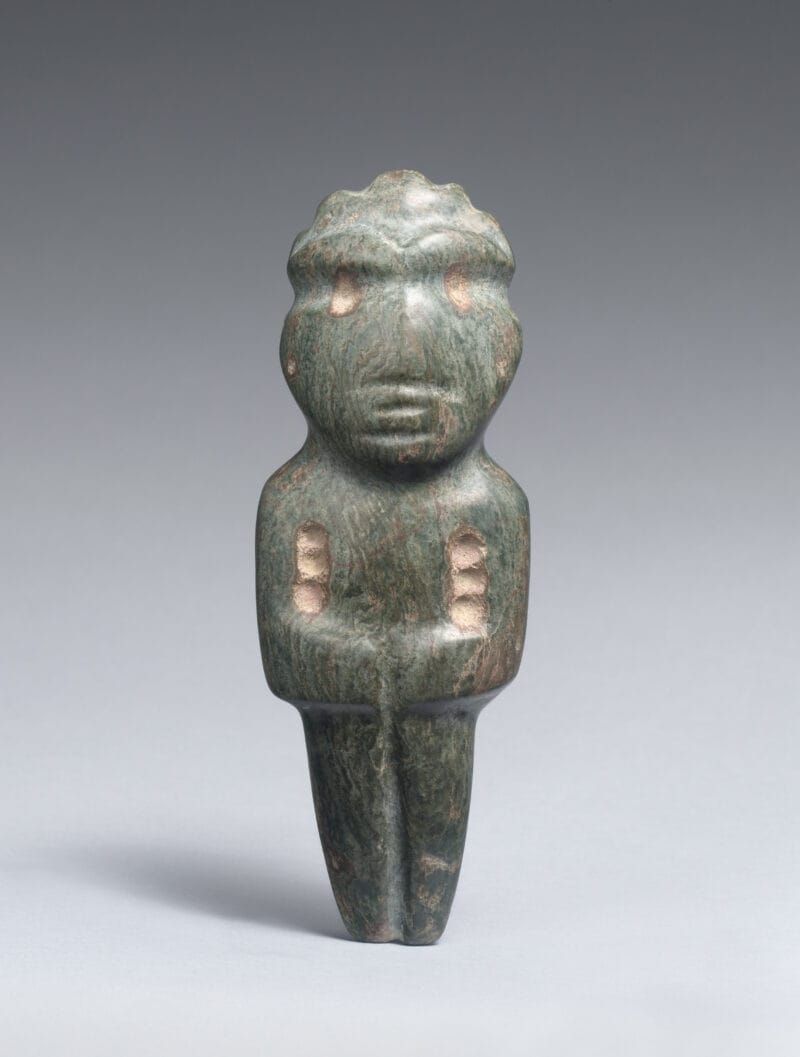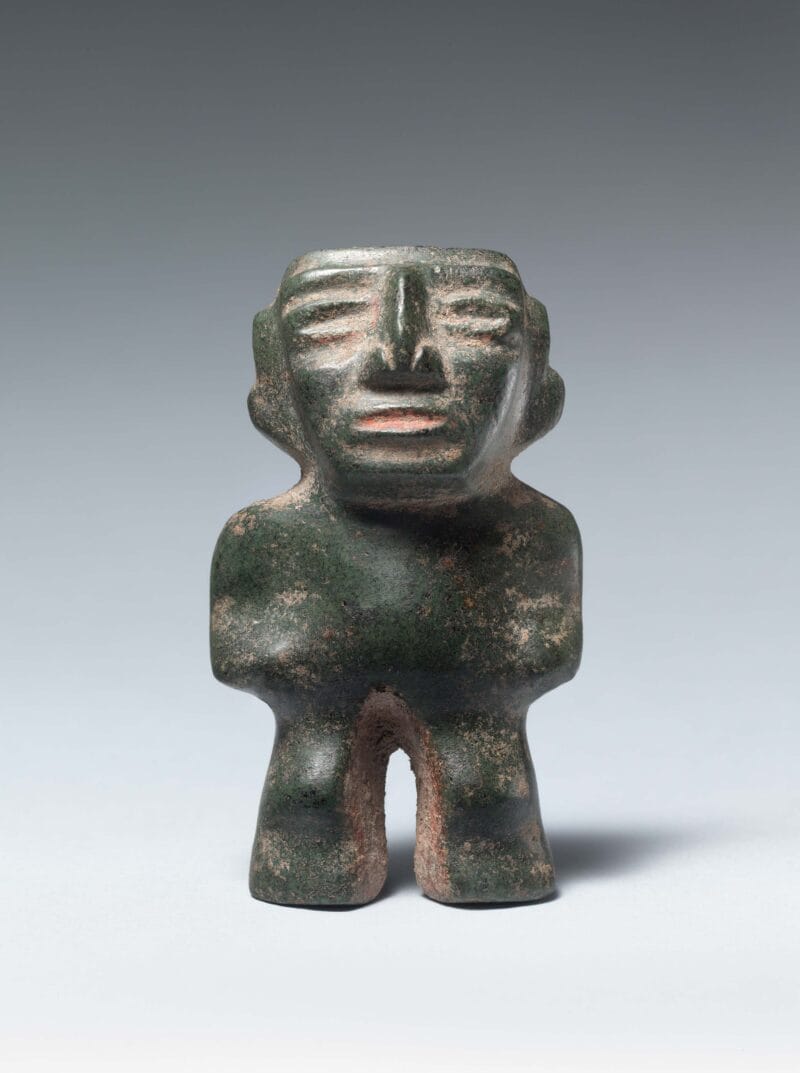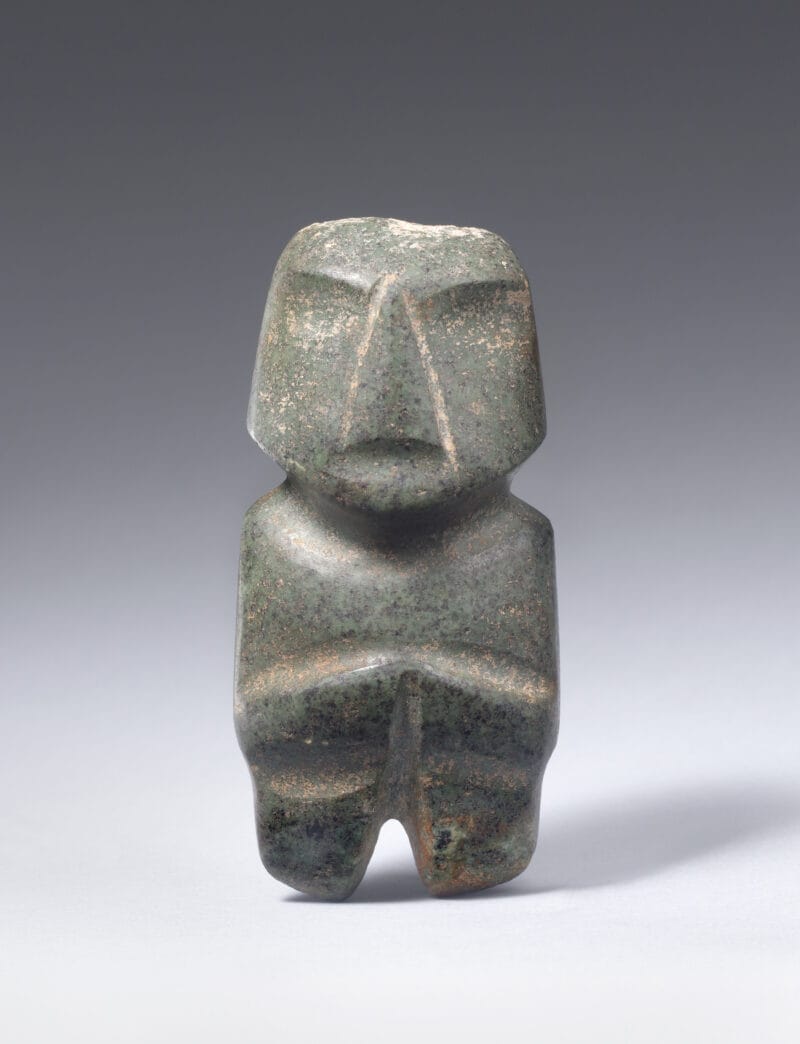
About the Object
The standing female figure here reveals abstract facial features, broad shoulders, and detached legs. The apse of the cleft separating the figure’s two legs nearly touches the figure’s abdominal area. The figure is also marked by two horizontal incisions, each located on center of the figure’s arms. Notably, the figure features a deep facial cleft in the shape of an inverted V, accentuating the figure’s triangular nose and sides of the mouth. The prominence of V-shaped clefts and the material used in the production of this piece (jadeite stone) strongly suggest symbols of fertility and rain, though further research into the Olmec tradition may unveil yet-undiscovered interpretations.
Additional Information
The Olmec culture, which developed a distinctive style since the second millennium BCE, prospered in areas such as the contemporary Mexican states of Veracruz and Tabasco from around 1400 BCE–400 BCE.
The connection between the Guerrero and Olmec traditions is still subject to intense scholarly debate. For instance, pre-Columbian scholar Peter David Joralemon identifies shared imagery, materials, and lapidary techniques as evidence that Olmecoid Guerrero sculptures from the Middle Preclassic to Late Preclassic period served as important connections that associate the Mezcala-Chontal to the earlier Olmec in a stylistic relationship. Joralemon also identifies some stylistic features of Middle Preclassic to Late Preclassic period greenstone sculptures as evidence of a connection between the Guerrero and Teotihuacán traditions (suggesting that Teotihuacán’s stone-working techniques developed from Guerrero-Olmec stone practice).
[Throckmorton Fine Art, New York, NY];
The Jan T. and Marica Vilcek Collection, 2004-2010;
Gift to The Vilcek Foundation, 2010;
Related Objects
You may also be interested in
Juan Pablo Contreras composes classical music with the sounds of Mexico

Felipe Baeza

Juan Pablo Contreras


